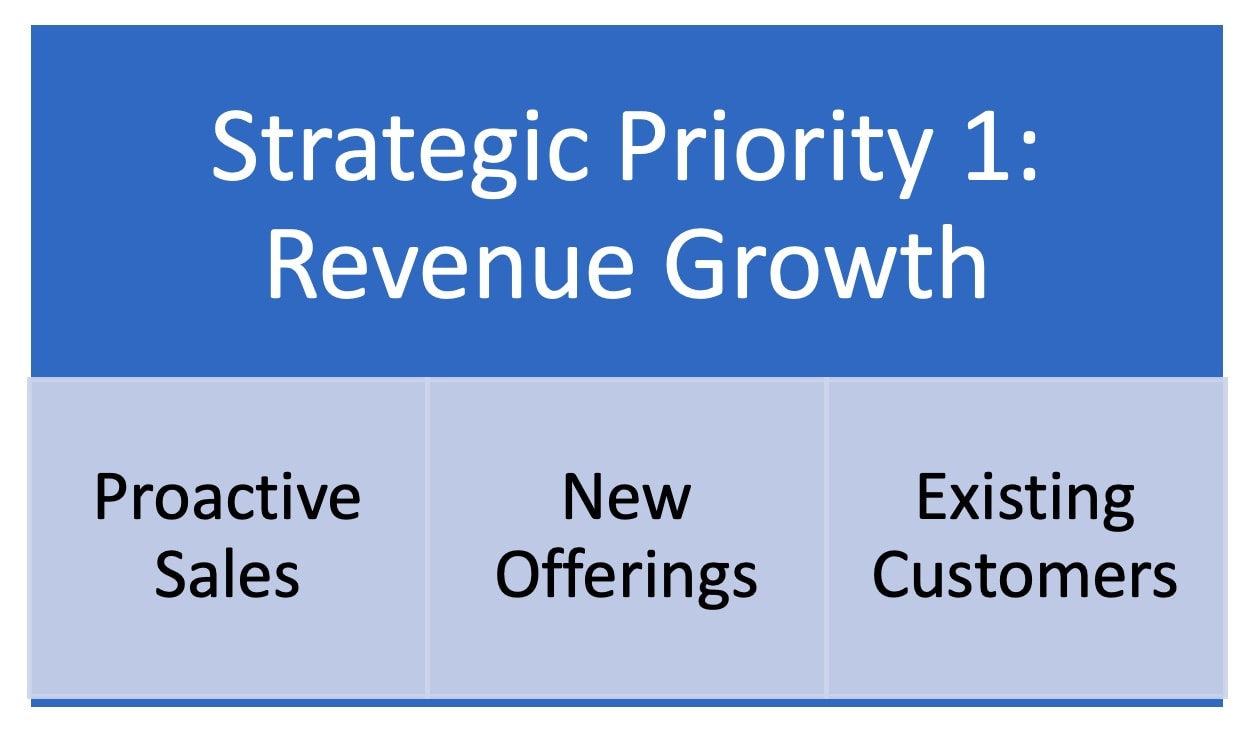“The best way to achieve your priorities is to have fewer priorities. ”
–Phil Symchych
It’s the time of year when we review the past year and set priorities and make plans for the next year. During my planning calls with business leaders of privately-held companies and advisors who work with small/medium enterprises, we discuss and map out priorities.
We use The Business Strategy Wheel℠, which I’ve created to simplify strategic planning by reducing the number of competing objectives. It ensures you and your team are focused on the critical success factors necessary for progress. It’s a visual process, based on priorities and factors determined by you and your team.
It’s simple, and it works with small, medium, and large companies, because it focuses people on fewer priorities while achieving measurable results.
The overall process has three main steps: review the prior year, establish priorities for the next year, and identify the critical success factors for each of the priorities.
Review
To review the prior year, this simple framework is highly effective. It’s the same framework I recommend for weekly team meetings and that I use with my global coaching clients.
- Successes – What went well? What are you great at doing? How have you helped others to succeed?
- Challenges – What difficulties did we overcome? Do we need more training or resources? What did we learn?
- Priorities – What goals, if achieved, would make a significant improvement to our employees, our customers, and ourselves?
Prioritize
To help you set priorities in your business, look at what areas will help to build your business wealth in the coming year. Wealth is a lag indicator, meaning you had to get other things right to build your wealth. We want to focus on those other priorities that will build your business wealth.
Strategic priorities may be defensive, offensive, or both. Defensive priorities may include hoarding more cash and finding more local suppliers. It’s always a good idea to save up cash. Ideally, you should have at least three months of expenses covered with cash.
The priorities can be offensive to achieve growth, such as raising your brand, expanding your reach, developing new offerings, and attracting new customers. They can be both.
The key to setting—and achieving—priorities is to set fewer priorities. Having too many priorities creates distraction, friction, and inefficiency.
Critical Success Factors
For each priority within The Business Strategy Wheel℠, you will want to identify two or three critical success factors. These are factors that you must get right to be successful. Each factor should be measurable and will determine the resources and actions required.
For example, if your strategic priority is revenue growth, then the critical success factors necessary to achieve revenue growth might be:
- Being more proactive in your sales approach by identifying and calling (phoning, not emailing) your target customers.
- Developing new offerings that will help your customers to be more successful in their business, to sell more, lower costs, improve quality, increase speed, do whatever your customer—and their customer—values.
- Focusing your sales efforts first and foremost on your existing customers who already know you, like you, and trust you.

Figure 88.1 Revenue growth: critical success factors.
For your business, I recommend setting one financial priority such as increasing your cash balance. Even if you have lots of cash, look at ways to accelerate your Total Days to Cash by collecting faster and increasing margins with enhanced value to your customers.
Another powerful priority is to increase revenues, more specifically, profitable revenues. Profit will help you to create more cash, which supports your financial priority.
The most important priority in business is to take care of your employees. Without employees, you can’t take care of your customers. Employees need nurturing and support at all times and especially after this stressful year. That means connecting with them, listening to them, hearing their ideas, and helping to position them for success in the next year.
And, if they’re working from home on a laptop and sitting at the kitchen table, they might also need a good office chair and a large monitor.
“Business, like life, is about people helping people.”
If you’d like to have your leadership team develop a strategic plan complete with actions and metrics in one day—or less—give me a call. Let’s talk.
Full speed ahead!
Thanks for reading.

